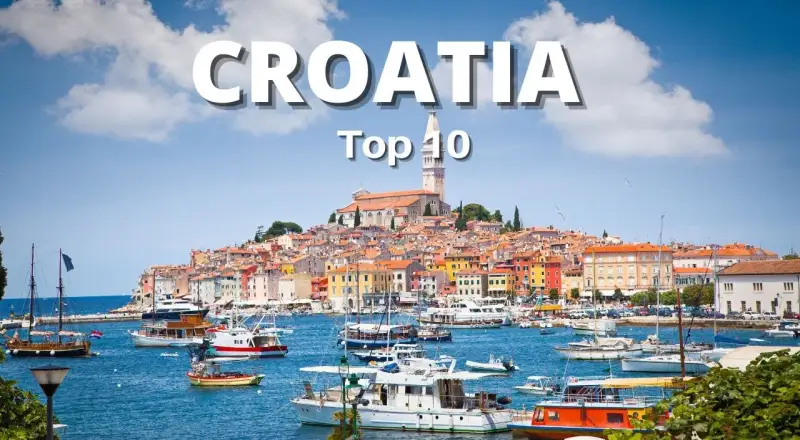Top 10 Places to Visit in Croatia
2024
votes
voters
views
items


Known as the “Pearl of the Adriatic,” Dubrovnik’s stunning medieval walls and orange-tiled rooftops have made it a UNESCO World Heritage site. Walk along its ancient fortifications, explore the Baroque and Gothic architecture, and lose yourself in the enchanting narrow streets. The city’s crystal-clear waters make it a perfect coastal retreat as well.

This breathtaking park is a natural wonder with cascading lakes and waterfalls that seem to emerge from a dream. The park’s interconnected lakes, set against lush green forests, create a magical landscape. Wooden walkways allow visitors to get up close to this vibrant natural beauty.

Hvar Island is renowned for its sun-drenched beaches, lavender fields, and lively nightlife. Its historic town is filled with Venetian architecture, including a 13th-century fortress that offers panoramic views of the island and surrounding seas. Hvar’s crystal waters and charming harbors make it one of Croatia’s most luxurious destinations.

Built around the ruins of the Roman Emperor Diocletian’s Palace, Split is a living museum of history mixed with a bustling urban vibe. The city’s ancient walls hide vibrant cafes, boutiques, and bustling markets. From here, visitors can also explore the nearby islands or hike up Marjan Hill for stunning views of the coast.

A city where ancient Roman ruins meet modern art, Zadar offers a truly unique experience. Visitors can witness the ancient Forum, see the modern Sea Organ, which creates music from the waves, and the Sun Salutation, a massive solar panel art installation that lights up the night sky.

Known as the birthplace of the famed explorer Marco Polo, Korčula is a picturesque island with medieval charm. Its narrow, winding streets are lined with stone houses, and its wine country produces some of the finest Croatian wines. Korčula also hosts traditional sword dances, adding to its cultural allure.

Often referred to as Croatia’s most romantic town, Rovinj is a beautiful fishing port on the Istrian Peninsula. The pastel-colored buildings of its old town sit atop a hill overlooking the sea. Explore its cobbled streets, vibrant art galleries, and enjoy a meal of fresh seafood by the water.

Similar to Plitvice, Krka National Park offers incredible waterfalls and scenic walking paths. The standout feature is the Skradinski Buk waterfall, where visitors can swim in the clear pools beneath the cascading water. Krka also has a rich cultural history, with ancient monasteries and ruins dotting the park.

Known for its impressive Roman amphitheater, one of the best-preserved in the world, Pula is a city steeped in history. This Istrian city offers a mix of ancient Roman ruins and a vibrant modern harbor. Visitors can explore the amphitheater, walk the streets lined with Venetian buildings, or enjoy its beautiful beaches nearby.

Famous for its ever-changing shape due to the wind and tide, Zlatni Rat is one of Croatia’s most iconic beaches. Located on Brač Island, this golden pebble beach juts out into the turquoise Adriatic, providing a unique and idyllic setting for swimming, windsurfing, and sunbathing.